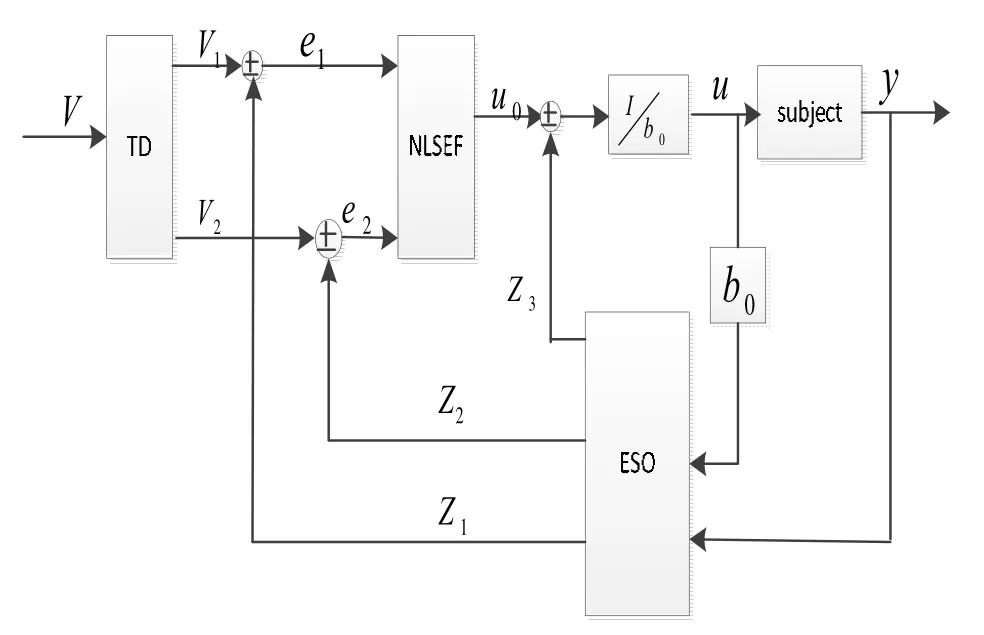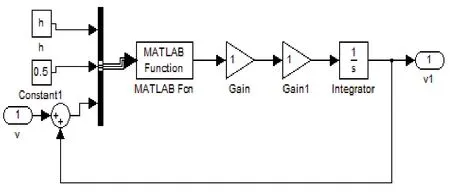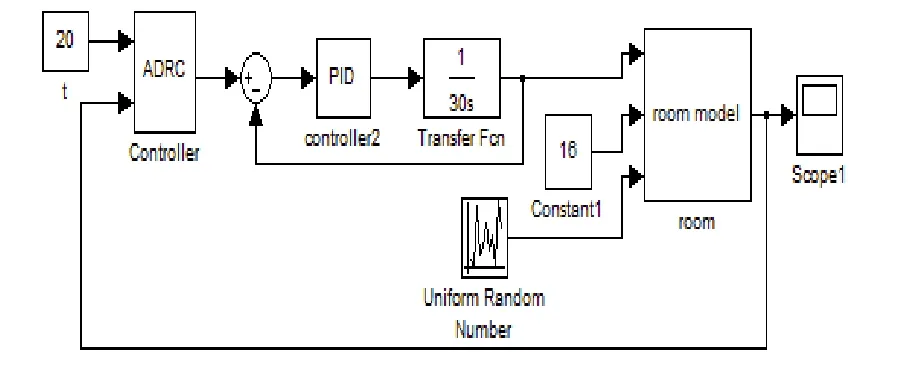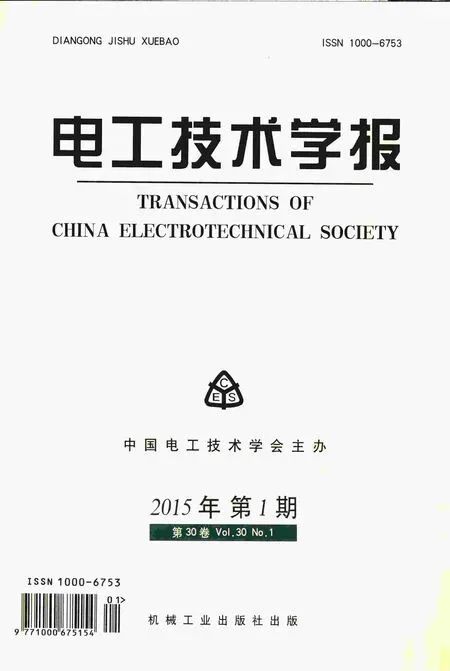Temperature of Air Conditioning Spaces Based on Active Disturbance Rejection Control
Shi Yancai Li Zhuangju Lv Cai
(Beijing University of Civil Engineering and Architecture Beijing 100044 China)
1 Introduction
VAV air conditioning system is able to regulate the wind volume based on the actual air heat and moisture load of air conditioning zone.It has been extensively used to several large shopping malls and office buildings at present.But with the development of science and technology,people demand the quality of life increasingly and pay more and more attention to the comfort of air-conditioned rooms.According to the characteristics of the HVAC (heating ventilation air conditioning) system,combining traditional and modern control theory and methods,how to design a controller can quickly and accurately reach the comfort range of the air temperature and humidity in the room under the variety of interferential factors is a challenge automatic control engineering technical staff face.The temperature control method of air conditioning room has various kinds,including the traditional PID control,intelligent PID control,fuzzy control.But temperature control system which is a complex nonlinear system is much difficult to achieve satisfactory results by using traditional PID control[1].Intelligent control needs high cost and the accurate mathematics model of controlled object,which makes the control is complex.
Based on ADRC (active disturbance rejection control) technology to control the air conditioning room temperature so that it varies within a certain range,overcomes the disadvantage of PID,and effectively overcomes the interference factors existing in the system.
2 The temperature control of air conditioning room
2.1 The control methods of room temperature control
The ultimate intention of controlling the air conditioning room temperature with auto control principle is to make the room temperature varying within a certain range and meet comfort requirements.The VAV air conditioning system changes the amount of cold air by modulating the terminal device to change the room temperature.Terminal devices are the valve which is used to control the air flow.The control of valve can be achieved by single loop control or cascade control in practice.
Figure 1 shows the schematic diagram of singleloop control.The temperature in the air conditioning room has a direct relationship with the size of the air valve,and it is influenced by some other factors at the terminal branch.And because of the severe hysteresis of regional temperature,so the“past correction”phenomenon appears in the adjustment process.So single-loop control changes with pressure,vulnerable to disturbances and control precision isn’t high[2].It cannot obtain very good results to control temperature which is complex and hysteresis.

Fig.1 Single-loop control
Cascade control consists of temperature control circuit and terminal auxiliary air control loop.The main regulator has fixed setting values.The output of main regulator is based on the difference between indoor temperature and the setting value.The output is the given value of the auxiliary regulator.The output of auxiliary regulator generates from the difference between setting value and supply air rate.Auxiliary regulators control the supply air rate by the method of controlling the regulating valve with the output.Thereby,cascade control would control room temperature,and the control principle diagram is showed in the Fig.2.The introduction of auxiliary circuits of cascade control can overcome the disturbance of the system,the inertia and pure delay of the object,and accelerate response speed of the system,and improve control quality.Cascade-control is used in this study.

Fig.2 Cascade-loop control
2.2 Air-conditioning room model
This paper study the temperature control in VAV air conditioning room and the controlled variable is air condition room temperature[3].The temperature control system is a big lag,nonlinear and complex control system.Its main features are the long delay time,settling time,and large overshoot.The high accuracy is difficult to achieve by adapting traditional control method.It is impossible to build an accurate model of air condition room temperature[4].Because air condition room is a nonlinear time varying system which has large inertia and many disturbance factors such as external air temperature,weather conditions,the running status of equipment,personnel changes.Therefore,it is necessary to limit and simplify these related influence factors when an air condition room model is built.So,the following hypotheses are made:
(1)Air condition room is regarded as single tank model without considering the time delay[5]
(2)The temperature of air condition rooms is evendistributed,and airflow movement is ignored.
(3)The density of air in air condition room is constant,without the influence of temperature or atmospheric pressure.
According to the above assumption,now defined G as the supply air volume,t0is the temperature of supplied air,tnis the temperature of indoor,cris the specific heat of room,c is the specific heat capacity of the air.P is the density of air,Q0is the thermal load of the room.
According to the energy conservation equation the mathematical model is built[6]

The specific heat of room constitutes the specific heat of air and the heat of building envelope surface[7]

Where mc is the specific heat of wall,v is the volume of room.

Tabl.1 the design parameters of simulation model
The simulation model can be built in Simulink according to formula 1,and it is showed in the Fig.3

Fig.3 Simulation model of air condition room
It is not convenient to operate for the complexity of air condition model.Therefore,subsystem mask is applied to the model building.The model is package by the“Edit-Creat Subsystemy”option in Simulink.Fig.4 shows the packaging model.The parameters of packaging model can be set by dialog boxes .

Fig.3 Air condition room simulation module
3 ADRC control technique
3.1 The principle and structure of active disturbance rejection control
ADRC technique is a new and practical technology.It conforms to the trend of digital control,and it develops and enriches the essence of PID.Some algorithms that have special functions are developed with nonlinear mechanism at the base of the control principle of PID,such as tracking differentiator (TD),extended state observer (ESO),and nonlinear PID.The new controller comprised of these new algorithms has high-quality[8].
A large number of engineering practices show that the control effect of PID is unsatisfactory when the system is nonlinear,hysteresis and uncertain.ADRC Technology is a combination of Modern control theory and Modern signal processing technology,and it is improved from PID control algorithm.
The concrete solutions are as following[9]
(1)Arranges appropriate transient process.
(2)Extract differential reasonably.
(3)Form error feedback law with nonlinear combination.
(4)Estimate the sum of disturbance effecting on system with the application of extended state observer,and make compensation.Thus the feedback of error integral is substituted.
ADRC controller consists of three parts:
①Tracking differentiator (TD):It arranges transient process for the input of system,and smooth input signal and differential signal of input signal can be gained.
②Extended state observer (ESO):the real-time actuating quantity is estimated and compensation is made,and the nonlinear and uncertain object with unknown external disturbance is transform to simple“Integral series”.It makes the object linear and certainty.
③Nonlinear state error feedback (NLSEF):configure state error with nonlinear combination
Fig.5 shows the structure diagram of typical auto disturbance rejection controller of two order system.

Fig.5 The sketch map of typical ADRC
3.2 ADRC control algorithm
Through the analysis on room's thermodynamic Equ.(1),making the room temperature tnas controlled variable x,the supply air rate G as control variable u,the room's thermodynamic equation can be rewritten as

Where

For.(2) accord with the general form of ADRC controller.Principle of ADRC can be used to control the air conditioning room temperature.
The discrete algorithms of first-order ADRC controller are as follows.
Tracking-differentiator

Extended state observer

Nonlinear combination

Where fal(e,α)δ, is defined as follows

3.3 Model of ADRC in Simulink
According to the algorithm of ADRC,simulation model is established under the Simulink environment.The ADRC consists of three parts,each part needs to be modeled,and then combine with each part.Under the above arrangement algorithm of the tracking differentiator,its model is established by using the Basic module in Simulink,which is shown as the Fig.6.It need transfer the nonlinear function fal (e,α ,δ)to mfiles in the modeling process,then using Matlab Function module to call the m-file.Then select all found modules to create a subsystem.
The modeling process of extended state observer and nonlinear combinations is no longer one by one here.According to the found subsystem,combinations packaged model of ADRC controller is shown as follows

Fig.6 Model of tracking-differentiator

Fig.7 ADRC model
4 simulation of Air conditioning room’s temperature control system
4.1 Simulation of PID
The cascade control is operated for room temperature control which is introduced in the first section.Main circuit of the temperature control select PI control in this article,the output of which set the room's air volume.Subloop of the air volume control adopt PID control,control valve,trace temperature variation.The PID parameter is the control core.It can obtain better control effect by using a good set of parameters.The parameters of each controller are adjusted based on the parameter tuning method of cascade control.Through a lot of simulation,select a set of optimal data as the parameters of the controller.The simulation model is shown as Fig.8.
The parameters of temperature controller PI are shown as:Kp=-0.2,Ki=-0.0003;he PID parameters are as follows:Kp=5,Ki=0.4,Kd=2.

Fig.8 simulation model of PID
Simulation result is shown as follows,in which it can be found the room temperature close the set value by about 1300s,fluctuate within a range is uncertain.This illustrates that the PID control has disadvantage ability at overcoming uncertainty and disturbance.

Fig.9 temperature curve of PID
4.2 Simulation of ADRC
Using the technique of ADRC control to control the VAV Box,the simulation model is shown as follows,in which the ADRC controller instead of PI controller,compared with the Fig.10.The parameters of ADRC are as follows:r0=0.0002,β01=0.005,β1=0.02,h=8;β02=5×10-5,b0=0.04。

Fig.10 Simulation model of ADRC
Simulation result is shown as Fig.11,it can be found temperature closer to the set value at the around 1000s,and stable around the set value from the simulation result.Compared with PID control,ADRC controller is able to overcome disturbances and uncertainties,reduce overshoot and improve stability of the system.

Fig.11 temperature curve of ADRC
5 CONCLUSION
Aiming at the complexity,delay as well as nonlinearity of air conditioning room temperature control system,it uses the controller based on ADRC instead of the original temperature controller PI,to control the temperature.The simulation results show that the ADRC controller has great improvement on reaction speed,overshoot,and stability of the system and overcome the disturbed,compared with the conventional PID.But the parameters of ADRC controller are very difficult to adjust;its practical application still needs further research.
Reference
[1]Xing L,Yang S,Lu Q.Self-tuning fuzzy PID controller for temperature control In Variable Air Volume air conditioning systems[C].Information and Automation(ICIA),2010 IEEE International Conference on.IEEE,2010:2117-2120.
[2]Dai Binwen.The VAV air conditioning control system research methods[D].Beijing:Tsinghua University,1998.
[3]Kettler JP.Controlling minimum ventilation volume in VAV systems [J].ASHRAE Transaction,1998:45-50.
[4]Wang Cuihua,Dai Yulong,Cai Peili.The establishment of air conditioning room simulation model based on Matlab/ Simulink environment[J].Journal of Dalian Fisheries University,2005,20(2):128-131.
[5]Borresen BA.Thermal room models for control analysis [J].ASHRAE Transaction,1981,87(2).
[6]Tashtoush Bourhan,Molhim M,AI-rousanM.Dynamic model of an HVAC System for control analysis[J].Energy,2005,30:1729-174.
[7]Chen Hua.Analysis of VAV air conditioning system operating characteristics[D].Doctoral dissertation,Tianjin Univerity,2003.
[8]Gao Zhiqiang.Scaling and bandwidth-parameterization based controller-tuning[C].Proceedings of the 2003 American Control Conference.Denver:IEEE,2003,6:4989-4996.
[9]Line Stream Technologies signs licensing deal with Texas Instruments,The Plain Dealer,July 12th,2011.

